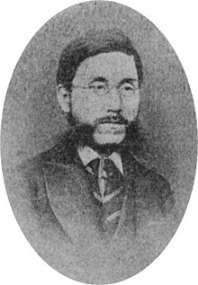| The Public Paperfolding History Project
x |
|||||||
| Shinzo Seki | |||||||
This page is being used to collect information about the Japanese educationalist Shinzo Seki (1843 - 1879). Please contact me if you know any of this information is incorrect or if you have any other information that should be added. Thank you.
********** 1872 According to 'Missionary Froebelians' Pedagogy and Practice: Annie L Howe and her Glory Kindergarten Teacher Training School' by Yukio Nishida, which was published online by Cambridge University Press on 7th April 2022 Shinzo Seki translated (or perhaps paraphrased) Douai's 'The Kindergarten' into English. 'In particular, Shinzo Seki (1843-1880), who later became the first principal of the first Japanese kindergarten, introduced the ideas of kindergarten education to Japan by translating Douai's The Kindergarten: A Manual for the Introduction of Froebel's System of Primary Education into Public Schools; and for the Use of Mothers and Private Teachers. Fundamentally, Froebel's theory has a religious aspect. Froebel believed that the Christian religion serves to wholly complete the mutual relationship between God and man, and all education that is not founded on Christianity is one-sided, defective, and fruitless. However, although Seki referred to the concept of God many times in his work, the specific word “God” hardly ever appears in his translation, an expression of the contemporary Japanese social and political milieu. Instead, Seki created an edited translation where God is referred to as Sozobutsu shu (the Creator). Seki did not introduce Froebel's theological perspectives, as he considered Froebel's ideas to be abstract, metaphysical, and extremely religious and therefore too complex for Japanese people to understand. Moreover, these ideas were unsuitable for the contemporary social and political context, as Japanese people had no idea what kindergarten education was. Johann and Bertha Ronge's Practical Guide to the English Kinder Garten (Children's Garden): For the Use of Mothers, Nursery Governesses, and Infant Teachers; Being an Exposition of Froebel's System Of Infant Training (1858) was also widely used during the initial stages of the establishment of kindergartens in Japan. This book focused on the methodology of Froebel's Gifts (wooden blocks) and Occupations (a series of hands-on activities such as paper-weaving and paper-folding). However, none of Froebel's works, such as The Education of Man (1826) and Mother-Play and Nursery Songs (1844), were on the list of required literature for the development of kindergartens in Japan. Following Seki's concerns, the Ministry of Education pondered on the notion that Froebel's Christian ideology figured significantly in his kindergarten educational principles, which were not in line with the national religion of Shintoism and its veneration of the emperor of Japan. Under the emperor, children were not to be exposed to Froebel's Christian viewpoints, as they were mystical and metaphysical and rooted in a firm Christian ideology. In order to properly indigenize and localize kindergarten education as Japanese centers for pre-school learning, the ideas about kindergarten education were translated according to Japan's political, social, cultural, and educational needs.. According to 'The Black Forest in a Bamboo Garden: Missionary Kindergartens in Japan, 1868-1912' by Roberta Wollons, which was published in History of Education Quarterly , Spring, 1993, Vol. 33, No. 1 (Spring, 1993), pp. 1-35, Shinzo Seki 'translated a three-volume book on the kindergarten in 1872, and later added Kindergarten Guide by American kindergartner Elizabeth Peabody as a fourth volume in his translation'. I have been unable to identify the 'three-volume book' referred to. ********** 1876 In 1876 Shinzo Seki, who had previously been teacher of English at the Tokyo Women's Normal School, was appointed superintendent of the newly opened kindergarten attached to that school. The head teacher of the kindergarten was Clara Zitelmann Matsuno, whose Japanese was limited, and who therefore relied on Shinzo Seki (and Taka Nakamura) to translate for her. According to 11-14 (1876) First Government Kindergarten | MeijiShowa, Tokyo - Vintage Images of Japan this year also saw publication of Shinzo Seki's book 'Kindergarten Diary' (????). ********** 1879 Publication of Shinzo Seki' s book 'Yochien Ho Niju Yuki' (????????) (Twenty Joys of Play in Kindergarten), which contains inter alia drawings of children sitting at tables engaged in various kindergarten occupations. ********** |
|||||||
